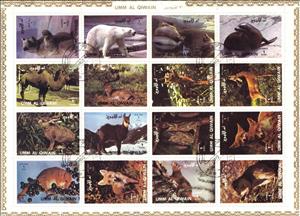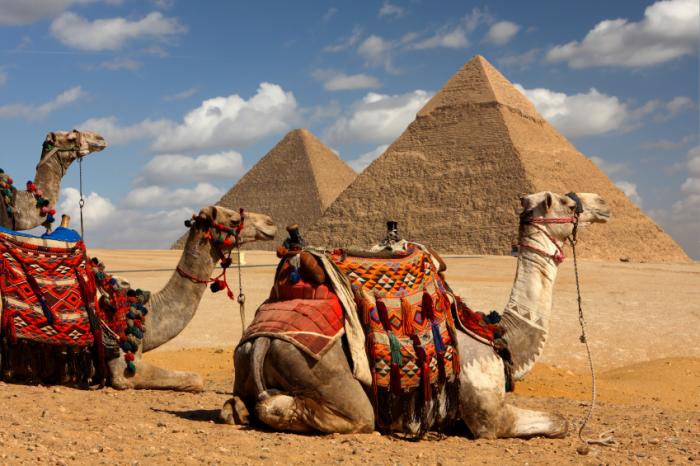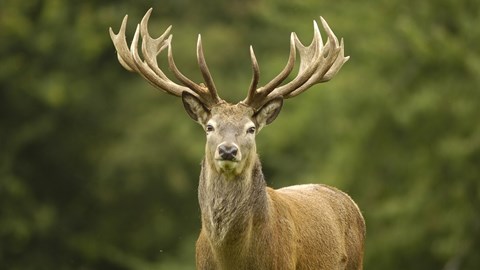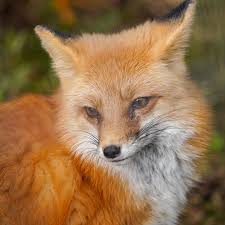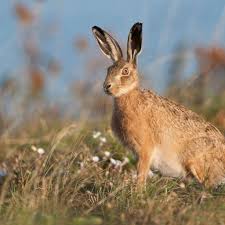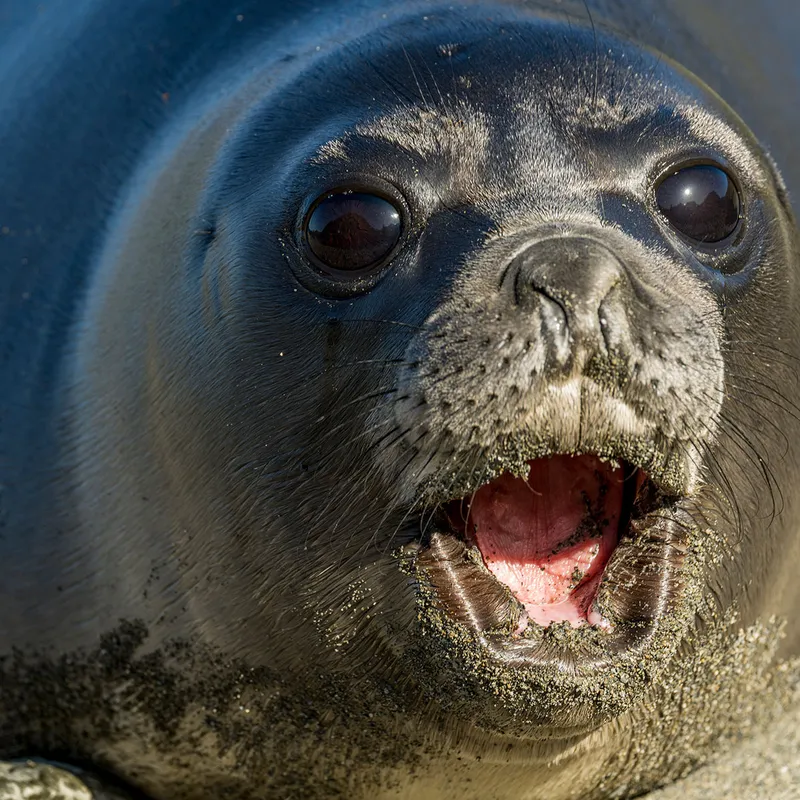Mini Sheet: Animals; large format (Umm al-Qiwain 1972)
Animals; large format (Umm al-Qiwain 1972)
01 January (Umm al-Qiwain ) within release Animals; large format goes into circulation Mini Sheet Animals; large format face value 16*1 United Arab Emirates riyal
| Mini Sheet Animals; large format in catalogues | |
|---|---|
| Michel: | Mi: UM 1230A-1145AKB |
Mini Sheet is square format.
Also in the issue Animals; large format:
- Mini Sheet - Tropical fishes; large format face value 16*1;
- Stamp - Fish face value 1;
- Stamp - Polar Bear (Ursus maritimus) face value 1;
- Stamp - Bactrian Camel (Camelus bactrianus) face value 1;
- Stamp - Fallow Deer (Dama dama) face value 1;
- Stamp - Eurasian Eagle-owl (Bubo bubo) face value 1;
- Stamp - Red Fox (Vulpes vulpes) face value 1;
- Stamp - Goat face value 1;
- Stamp - Roses face value 1;
- Stamp - Fish face value 1;
- Stamp - Butterfly face value 1;
- Stamp - European Bison (Bison bonasus) face value 1;
- Stamp - Sumatran Orangutan (Pongo sp.) face value 1;
- Stamp - Gaur (Bos gaurus) face value 1;
- Stamp - Fauna face value 1;
- Stamp - Markhor (Capra falconeri) face value 1;
- Stamp - Tasmanian Tiger (Thylacinus cynocephalus) face value 1;
- Stamp - Fauna face value 1;
- Stamp - Fauna face value 1;
- Stamp - Fauna face value 1;
- Stamp - Brown Bear (Ursus arctos) face value 1;
- Stamp - Black-footed Ferret (Mustela nigripes) face value 1;
- Stamp - Tapir (Tapirus sp.) face value 1;
- Stamp - Chinchilla (Chinchilla sp.) face value 1;
- Stamp - Spectacled Bear (Tremarctos ornatus) face value 1;
- Stamp - Koala (Phascolarctos cinereus) face value 1;
- Stamp - Alpine Chamois (Rupicapra rupicapra) face value 1;
- Stamp - Chimpanzee (Pan troglodytes) face value 1;
- Stamp - Titi (Callicebinae) face value 1;
- Stamp - Zebra (Equus sp.) face value 1;
- Stamp - Giraffe (Giraffa camelopardalis) face value 1;
- Stamp - Hamadryas Baboon (Papio hamadryas) face value 1;
- Stamp - White Rhinoceros (Ceratotherium simum) face value 1;
- Stamp - Nile Crocodile (Crocodylus niloticus) face value 1;
- Stamp - Guanaco (Lama guanicoë) face value 1;
- Stamp - Black Rhinoceros (Diceros bicornis) face value 1;
- Stamp - Giraffe (Giraffa camelopardalis) face value 1;
- Stamp - Dromedary (Camelus dromedarius) face value 1;
- Stamp - Painting of the Easter Passion by Hans Memling face value 1;
- Stamp - Cheetah (Acinonyx jubatus) face value 1;
- Stamp - Cheetah (Acinonyx jubatus) face value 1;
- Stamp - Lion (Panthera leo) face value 1;
- Stamp - Red Deer (Cervus elaphus) face value 1;
- Stamp - Horse (Equus ferus caballus) face value 1;
- Mini Sheet - Tropical fishes; large format face value 16*1;
- Mini Sheet - Tropical fishes; small format face value 16*1;
- Souvenir Sheet - Chimpanzee (Pan troglodytes) face value 1;
- Souvenir Sheet - Eurasian Eagle-owl (Bubo bubo) face value 1;
- Souvenir Sheet - Sea lion face value 1;
- Souvenir Sheet - Lion (Panthera leo) face value 1;
- Souvenir Sheet - Fallow Deer (Dama dama) face value 1;
- Souvenir Sheet - Sea Lion (Zalophus sp.) face value 1;
- Souvenir Sheet - White Rhinoceros (Ceratotherium simum) face value 1;
- Souvenir Sheet - Titi (Callicebinae) face value 1;
- Souvenir Sheet - Gooral (Naemorhedus sp.) face value 1;
- Souvenir Sheet - Red Fox (Vulpes vulpes) face value 1;
- Souvenir Sheet - Red Fox (Vulpes vulpes) face value 1;
- Souvenir Sheet - Polar Bear (Ursus maritimus) face value 1;
- Souvenir Sheet - Red Squirrel (Sciurus vulgaris) face value 1;
- Souvenir Sheet - Giraffe (Giraffa camelopardalis) face value 1;
- Souvenir Sheet - European Hare (Leus europaeus) face value 1;
- Souvenir Sheet - Bactrian Camel (Camelus bactrianus) face value 1;
- Souvenir Sheet - Brown Bear (Ursus arctos) face value 1;
- Souvenir Sheet - African Elephant (Loxodonta africana) face value 1;
- Souvenir Sheet - Bactrian Camel (Camelus bactrianus) face value 1;
- Souvenir Sheet - Nile Crocodile (Crocodylus niloticus) face value 1;
- Souvenir Sheet - Red Fox (Vulpes vulpes) face value 1;
- Souvenir Sheet - Roe Deer (Capreolus capreolus) - Fawn face value 1;
- Souvenir Sheet - Horse (Equus ferus caballus) face value 1;
- Souvenir Sheet - Red Fox (Vulpes vulpes) face value 1;
- Souvenir Sheet - Cheetah (Acinonyx jubatus) face value 1;
- Souvenir Sheet - White Rhinoceros (Ceratotherium simum) face value 1;
- Souvenir Sheet - Black-tailed Prairie Dog (Cynomys ludovicianus) face value 1;
- Souvenir Sheet - Roe Deer (Capreolus capreolus) - Fawn face value 1;
- Souvenir Sheet - Sea Lion (Zalophus sp.) face value 1;
- Souvenir Sheet - Roe Deer (Capreolus capreolus) face value 1;
- Souvenir Sheet - Guanaco (Lama guanicoë) face value 1;
- Souvenir Sheet - Black Rhinoceros (Diceros bicornis) face value 1;
- Souvenir Sheet - Eurasian Eagle-owl (Bubo bubo) face value 1;
- Souvenir Sheet - Hamadryas Baboon (Papio hamadryas) face value 1;
- Souvenir Sheet - Gooral (Naemorhedus sp.) face value 1;
- Souvenir Sheet - Brown Bear (Ursus arctos) face value 1;
- Souvenir Sheet - Red Squirrel (Sciurus vulgaris) face value 1;
- Souvenir Sheet - African Elephant (Loxodonta africana) face value 1;
- Souvenir Sheet - Common Dormouse (Muscardinus avellanarius) face value 1;
- Souvenir Sheet - Chimpanzee (Pan troglodytes) face value 1;
- Souvenir Sheet - Sea Lion (Zalophus sp.) face value 1;
- Souvenir Sheet - Polar Bear (Ursus maritimus) face value 1;
- Souvenir Sheet - Giraffe (Giraffa camelopardalis) face value 1;
- Souvenir Sheet - European Hare (Leus europaeus) face value 1;
- Souvenir Sheet - Black Rhinoceros (Diceros bicornis) face value 1;
- Souvenir Sheet - Black-tailed Prairie Dog (Cynomys ludovicianus) face value 1;
- Souvenir Sheet - Titi (Callicebinae) face value 1;
- Souvenir Sheet - Cheetah (Acinonyx jubatus) face value 1;
- Souvenir Sheet - Common Dormouse (Muscardinus avellanarius) face value 1;
- Souvenir Sheet - Roe Deer (Capreolus capreolus) face value 1;
- Mini Sheet - Animals; large format face value 16*1;
- Mini Sheet - Animals; large format face value 16*1;
- Mini Sheet - Animals; large format face value 16*1;
- Souvenir Sheet - Nile Crocodile (Crocodylus niloticus) face value 1;
- Souvenir Sheet - Horse (Equus ferus caballus) face value 1;
- Souvenir Sheet - Cheetah (Acinonyx jubatus) face value 1;
- Souvenir Sheet - Lion (Panthera leo) face value 1;
- Souvenir Sheet - Black Rhinoceros (Diceros bicornis) face value 1;
- Souvenir Sheet - Zebra (Equus sp.) face value 1;
- Souvenir Sheet - Black-tailed Prairie Dog (Cynomys ludovicianus) face value 1;
- Souvenir Sheet - Fauna face value 1;
- Souvenir Sheet - Giraffe (Giraffa camelopardalis) face value 1;
- Souvenir Sheet - Sea Lion (Zalophus sp.) face value 1;
- Souvenir Sheet - Tapir (Tapirus sp.) face value 1;
- Souvenir Sheet - Eurasian Eagle-owl (Bubo bubo) face value 1;
- Souvenir Sheet - Roe Deer (Capreolus capreolus) face value 1;
- Souvenir Sheet - Tasmanian Tiger (Thylacinus cynocephalus) face value 1;
- Souvenir Sheet - Chimpanzee (Pan troglodytes) face value 1;
- Souvenir Sheet - European Hare (Leus europaeus) face value 1;
- Souvenir Sheet - Roe Deer (Capreolus capreolus) - Fawn face value 1;
- Souvenir Sheet - European Bison (Bison bonasus) face value 1;
- Souvenir Sheet - Sumatran Orangutan (Pongo sp.) face value 1;
- Souvenir Sheet - Zebra (Equus sp.) face value 1;
- Souvenir Sheet - Brown Bear (Ursus arctos) face value 1;
- Souvenir Sheet - Red Fox (Vulpes vulpes) face value 1;
- Souvenir Sheet - Titi (Callicebinae) face value 1;
- Souvenir Sheet - White Rhinoceros (Ceratotherium simum) face value 1;
- Souvenir Sheet - Giraffe (Giraffa camelopardalis) face value 1;
- Souvenir Sheet - Alpine Chamois (Rupicapra rupicapra) face value 1;
- Souvenir Sheet - Red Squirrel (Sciurus vulgaris) face value 1;
- Souvenir Sheet - Common Dormouse (Muscardinus avellanarius) face value 1;
- Souvenir Sheet - Fallow Deer (Dama dama) face value 1;
- Souvenir Sheet - Guanaco (Lama guanicoë) face value 1;
- Souvenir Sheet - Spectacled Bear (Tremarctos ornatus) face value 1;
- Souvenir Sheet - Polar Bear (Ursus maritimus) face value 1;
- Souvenir Sheet - Bactrian Camel (Camelus bactrianus) face value 1;
- Souvenir Sheet - Cheetah (Acinonyx jubatus) face value 1;
- Souvenir Sheet - Gaur (Bos gaurus) face value 1;
- Souvenir Sheet - Chinchilla (Chinchilla sp.) face value 1;
- Souvenir Sheet - Red Fox (Vulpes vulpes) face value 1;
- Souvenir Sheet - Lemur face value 1;
- Souvenir Sheet - Hamadryas Baboon (Papio hamadryas) face value 1;
- Souvenir Sheet - Gooral (Naemorhedus sp.) face value 1;
- Souvenir Sheet - Fallow Deer (Dama dama) face value 1;
- Souvenir Sheet - Cheetah (Acinonyx jubatus) face value 1;
- Souvenir Sheet - Sea Lion (Zalophus sp.) face value 1;
- Souvenir Sheet - Horse (Equus ferus caballus) face value 1;
- Souvenir Sheet - Giraffe (Giraffa camelopardalis) face value 1;
- Souvenir Sheet - Chamois (Rupicapra rupicapra) face value 1;
- Souvenir Sheet - Hamadryas Baboon (Papio hamadryas) face value 1;
- Mini Sheet - Animals face value 16*1;
|
Data entry completed
46%
|
|
|---|---|
| Mini Sheet Animals; large format in digits | |
| Country: | Umm al-Qiwain |
| Date: | 1972-01-01 |
| Emission: | Air Post |
| Format: | Mini Sheet |
| Face Value: | 16*1 United Arab Emirates riyal |
Mini Sheet Animals; large format it reflects the thematic directions:
Animals are multicellular, eukaryotic organisms of the kingdom Animalia (also called Metazoa). All animals are motile, meaning they can move spontaneously and independently, at some point in their lives. Their body plan eventually becomes fixed as they develop, although some undergo a process of metamorphosis later on in their lives. All animals are heterotrophs: they must ingest other organisms or their products for sustenance.
Bears are carnivoran mammals of the family Ursidae (/ˈɜːrsɪdiː, -daɪ/). They are classified as caniforms, or doglike carnivorans. Although only eight species of bears are extant, they are widespread, appearing in a wide variety of habitats throughout most of the Northern Hemisphere and partially in the Southern Hemisphere. Bears are found on the continents of North America, South America, and Eurasia. Common characteristics of modern bears include large bodies with stocky legs, long snouts, small rounded ears, shaggy hair, plantigrade paws with five nonretractile claws, and short tails.
A camel (from Latin: camelus and Greek: κάμηλος (kamēlos) from Ancient Semitic: gāmāl) is an even-toed ungulate in the genus Camelus that bears distinctive fatty deposits known as "humps" on its back. Camels have long been domesticated and, as livestock, they provide food (camel milk and meat) and textiles (fiber and felt from camel hair). Camels are working animals especially suited to their desert habitat and are a vital means of transport for passengers and cargo. There are three surviving species of camel. The one-humped dromedary makes up 94% of the world's camel population, and the two-humped Bactrian camel makes up 6%. The wild Bactrian camel is a separate species and is now critically endangered.
A deer (pl.: deer) or true deer is a hoofed ruminant ungulate of the family Cervidae. It is divided into subfamilies Cervinae (which includes, among others, muntjac, elk (wapiti), red deer, and fallow deer) and Capreolinae (which includes, among others reindeer (caribou), white-tailed deer, roe deer, and moose). Male deer of almost all species (except the water deer), as well as female reindeer, grow and shed new antlers each year. These antlers are bony extensions of the skull and are often used for combat between males.
Foxes are small-to-medium-sized omnivorous mammals belonging to several genera of the family Canidae. They have a flattened skull; upright, triangular ears; a pointed, slightly upturned snout; and a long, bushy tail ("brush").
Hares and jackrabbits are mammals belonging to the genus Lepus. They are herbivores, and live solitarily or in pairs. They nest in slight depressions called forms, and their young are able to fend for themselves shortly after birth. The genus includes the largest lagomorphs. Most are fast runners with long, powerful hind legs, and large ears to dissipate body heat. Hare species are native to Africa, Eurasia and North America. A hare less than one year old is called a "leveret". A group of hares is called a "husk", a "down", or a "drove".
Pinnipeds (pronounced /ˈpɪnɪˌpɛdz/), commonly known as seals, are a widely distributed and diverse clade of carnivorous, fin-footed, semiaquatic, mostly marine mammals. They comprise the extant families Odobenidae (whose only living member is the walrus), Otariidae (the eared seals: sea lions and fur seals), and Phocidae (the earless seals, or true seals), with 34 extant species and more than 50 extinct species described from fossils. While seals were historically thought to have descended from two ancestral lines, molecular evidence supports them as a monophyletic group (descended from one ancestor). Pinnipeds belong to the suborder Caniformia of the order Carnivora; their closest living relatives are musteloids (weasels, raccoons, skunks and red pandas), having diverged about 50 million years ago.
Squirrels are members of the family Sciuridae a family that includes small or medium-sized rodents. The squirrel family includes tree squirrels, ground squirrels (including chipmunks and prairie dogs, among others), and flying squirrels. Squirrels are indigenous to the Americas, Eurasia, and Africa, and were introduced by humans to Australia. The earliest known fossilized squirrels date from the Eocene epoch, and among other living rodent families, the squirrels are most closely related to the mountain beaver and dormice
